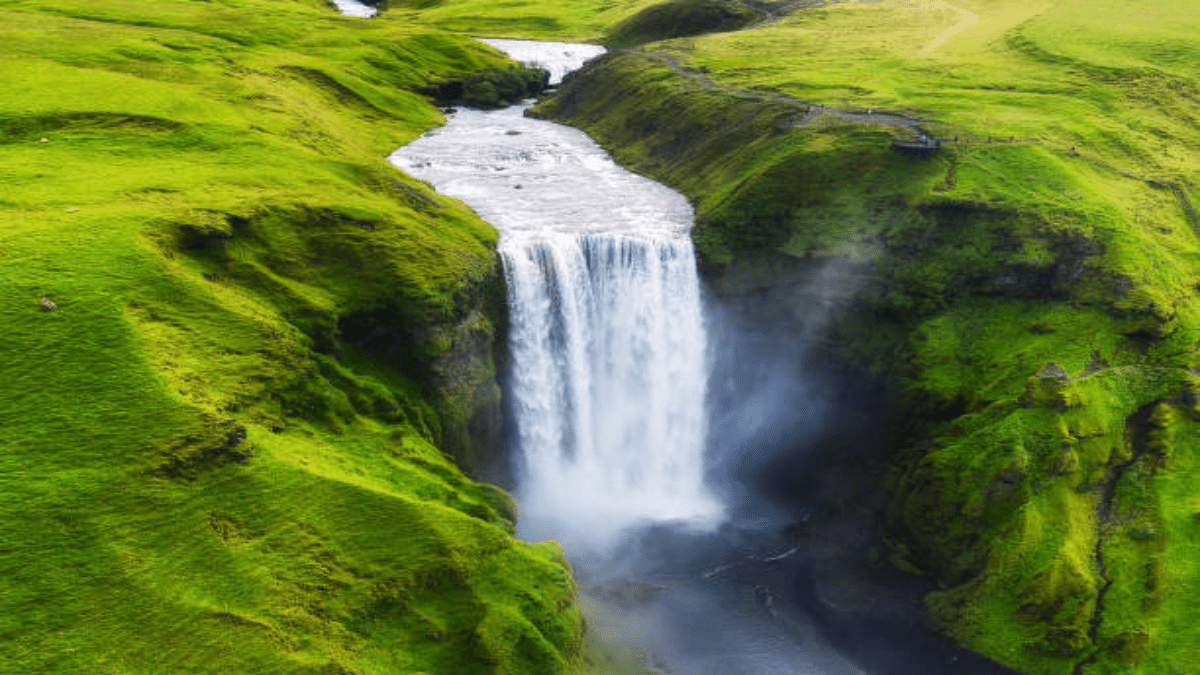Waterfalls, those captivating cascades of flowing water, have a mesmerizing quality that draws people from all walks of life to witness their beauty. But what exactly makes a waterfall move? This question delves into the fundamental forces of nature that govern the fluid dynamics of falling water. In this article, we’ll explore the key factors that contribute to the movement of waterfalls and the science behind this dynamic display of nature.
Gravity and the Force of Falling Water: At the heart of a waterfall’s movement is the omnipresent force of gravity. As water travels downstream in rivers or streams, it gradually gains potential energy due to its elevation above sea level. When the river encounters an elevation drop, such as a cliff or steep terrain, gravity takes over, pulling the water downward. This gravitational force propels the water over the edge, setting the stage for the dynamic movement of the waterfall.
Key Components Influencing Waterfall Movement:
- Elevation Difference: The primary factor influencing a waterfall’s movement is the difference in elevation between the upper and lower points of the waterfall. The greater the elevation drop, the more potential energy the water gains, resulting in a more powerful and dynamic waterfall. This height difference determines the force with which the water plummets, creating the visual spectacle that characterizes waterfalls.
- Flow Rate: The flow rate of water, or the volume of water passing through a specific point per unit of time, plays a crucial role in waterfall movement. A higher flow rate contributes to a more forceful cascade. The amount of precipitation, snowmelt, or upstream water sources directly affects the flow rate and, consequently, the intensity of the waterfall’s movement.
- Geological Features: The geological characteristics of the terrain also impact the movement of waterfalls. The presence of resistant rock layers, faults, or fractures can create varying shapes and formations, influencing how water descends. For instance, a waterfall may exhibit a free fall, a cascade, or a series of steps based on the geological features of its surroundings.
- Channel Morphology: The shape and morphology of the river or stream channel leading to the waterfall influence the water’s movement. Narrow, steep channels can accelerate the water, enhancing the dynamic nature of the waterfall. In contrast, wider channels may result in a more gradual descent.
Examples of Diverse Waterfall Movements:
- Free-Fall Movements: Waterfalls like Angel Falls in Venezuela showcase a free-fall movement, where water descends vertically, uninterrupted by the underlying terrain.
- Cascading Movements: Cascades, as seen in numerous waterfalls worldwide, involve a series of small steps or ledges that create a more gradual descent, producing a soothing and picturesque flow.
Conclusion: The movement of waterfalls is a captivating interplay of gravity, elevation, and the intricate characteristics of the surrounding landscape. As water descends with the force of gravity, it crafts the breathtaking spectacles that have fascinated humanity for centuries. Understanding the dynamics behind waterfall movement not only deepens our appreciation for these natural wonders but also sheds light on the remarkable forces shaping our planet’s landscapes.
Title: The Symphony of Nature: Exploring the Diversity of Waterfalls
Introduction: Waterfalls, with their awe-inspiring beauty and rhythmic cascades, come in a variety of forms, each shaped by the unique geological and hydrological features of its surroundings. From towering free-fall plunges to gentle stepped descents, waterfalls showcase the diversity of nature’s artistic expressions. In this article, we will embark on a journey to explore the different types of waterfalls, unraveling the distinct characteristics that make each type a masterpiece of its own.
- Free-Fall Waterfalls:
- Characteristics: Free-fall waterfalls, also known as vertical or straight drop falls, feature a dramatic descent where water plummets vertically without significant contact with the underlying terrain.
- Examples: Angel Falls in Venezuela, the world’s highest waterfall, exemplifies the free-fall type, creating a breathtaking uninterrupted drop of water.
- Cascading or Tiered Waterfalls:
- Characteristics: Cascading waterfalls are characterized by a series of steps or tiers, creating a stepped descent. These waterfalls often exhibit a rhythmic and graceful flow as water gracefully tumbles over multiple ledges.
- Examples: Multnomah Falls in Oregon, USA, and the famous Iguazu Falls on the border of Argentina and Brazil, both showcase captivating cascading movements.
- Horsetail Waterfalls:
- Characteristics: In horsetail waterfalls, the descending water maintains contact with the underlying rock surface for a significant portion of its descent, resembling the tail of a horse. The flow can be steady or broken into smaller streams.
- Examples: The Bridalveil Fall in Yosemite National Park, USA, is a classic example of a horsetail waterfall.
- Plunge or Punchbowl Waterfalls:
- Characteristics: Plunge waterfalls feature a single vertical drop with water directly descending into a plunge pool or basin. The forceful impact often results in mist and spray around the base.
- Examples: Kaieteur Falls in Guyana showcases the powerful plunge movement, creating a striking impact as water descends into the pool below.
- Block Waterfalls:
- Characteristics: Block waterfalls occur when water descends in a broad sheet over a wide, relatively uniform cliff face. The flow lacks the distinctive streams or channels observed in other waterfall types.
- Examples: The Horseshoe Falls, part of Niagara Falls on the border of the United States and Canada, exhibits characteristics of a block waterfall.
- Segmented or Multi-Channel Waterfalls:
- Characteristics: Segmented waterfalls feature distinct channels or separate streams of water descending parallel to each other. The channels may converge or diverge at different points in the descent.
- Examples: The Nohkalikai Falls in India demonstrates a segmented pattern, with water flowing through multiple distinct channels during its descent.
Conclusion: Waterfalls, with their myriad forms, stand as captivating testaments to the dynamic forces that shape our planet’s landscapes. From the dramatic plunge of free-fall waterfalls to the gentle steps of cascading falls, each type contributes to the symphony of nature’s diverse expressions. Exploring these different types of waterfalls enriches our understanding of the remarkable variety present in the world’s most enchanting natural wonders.

